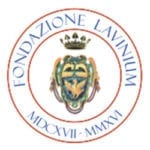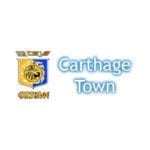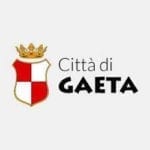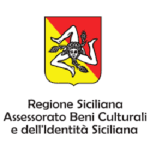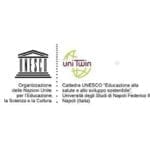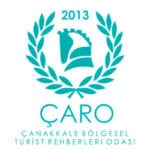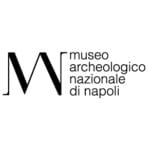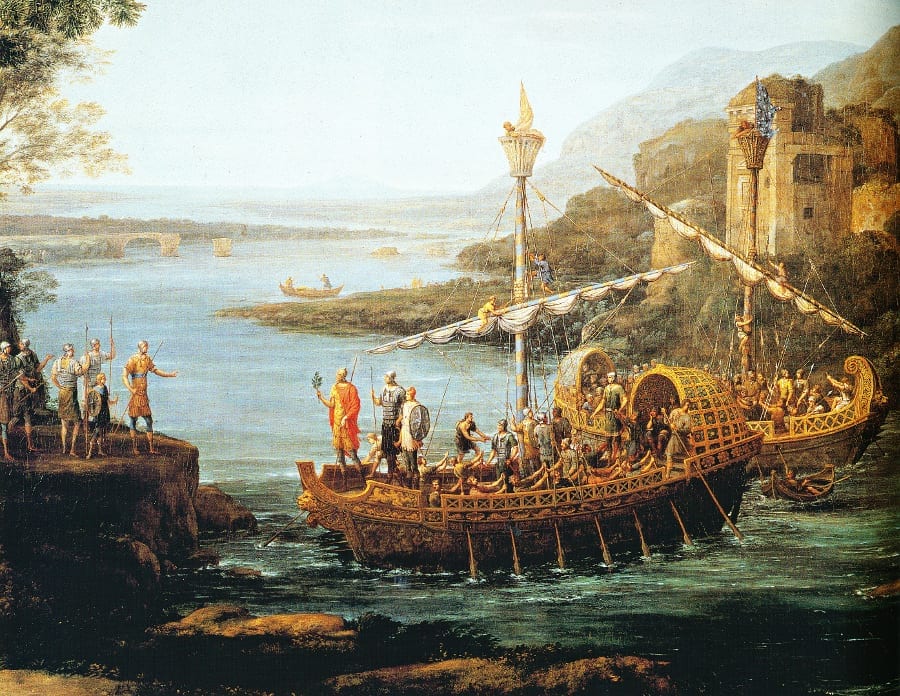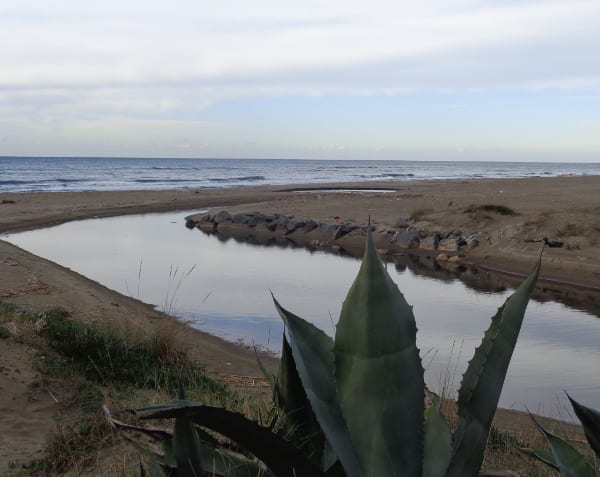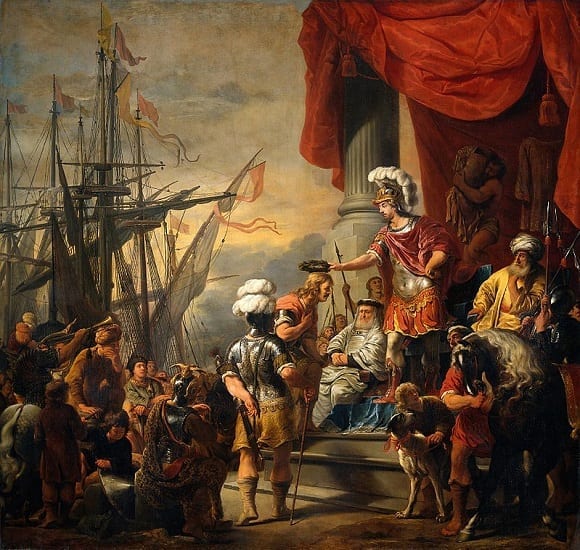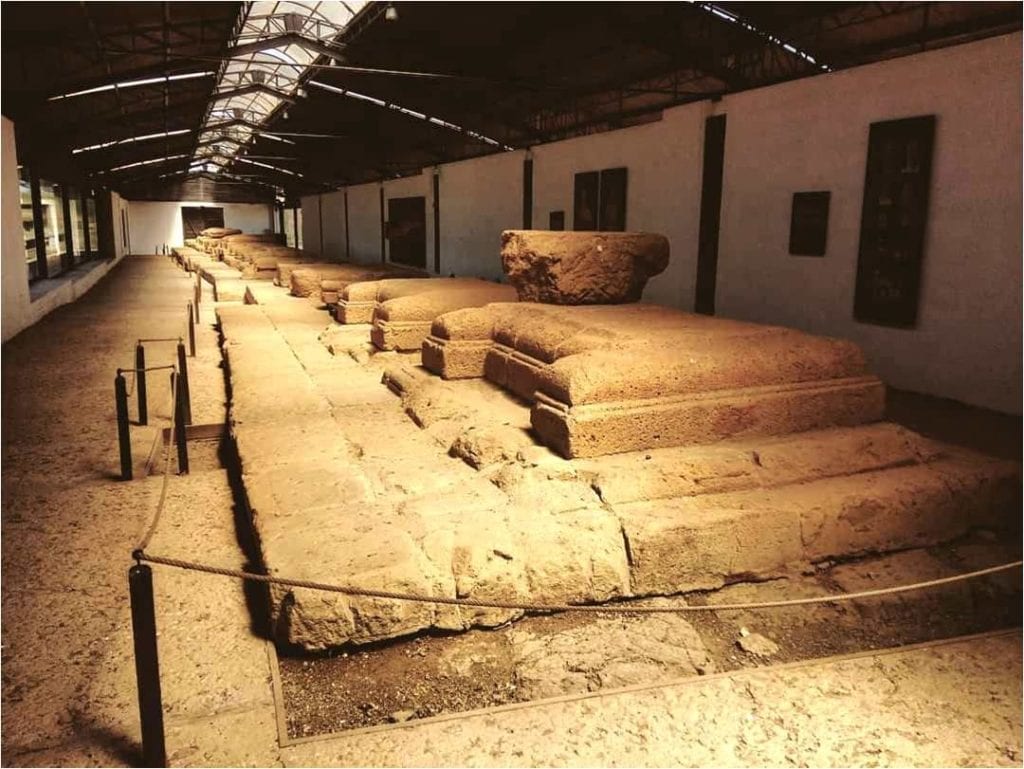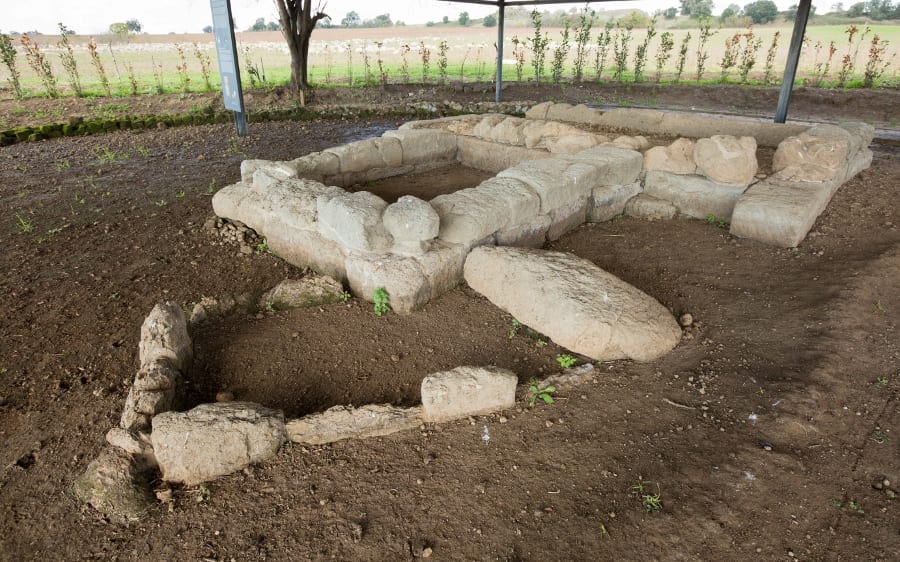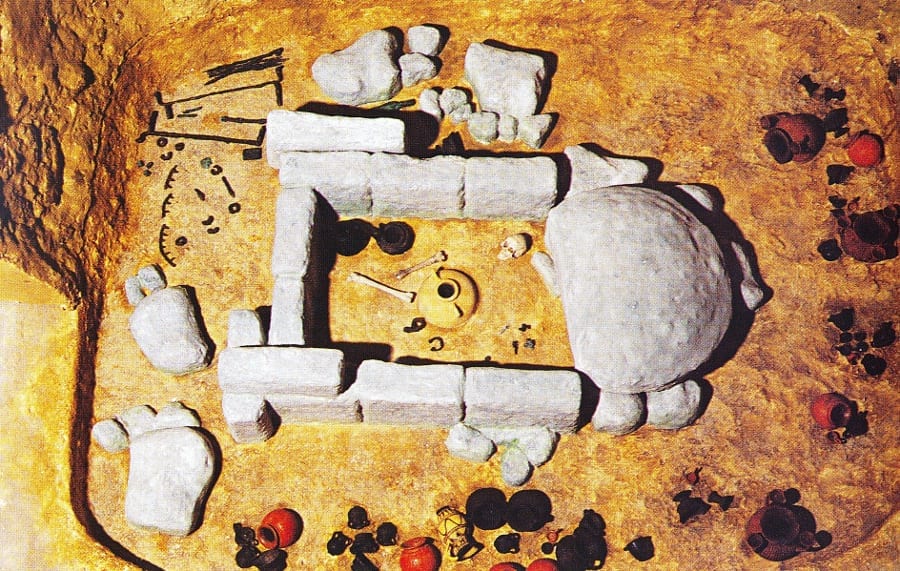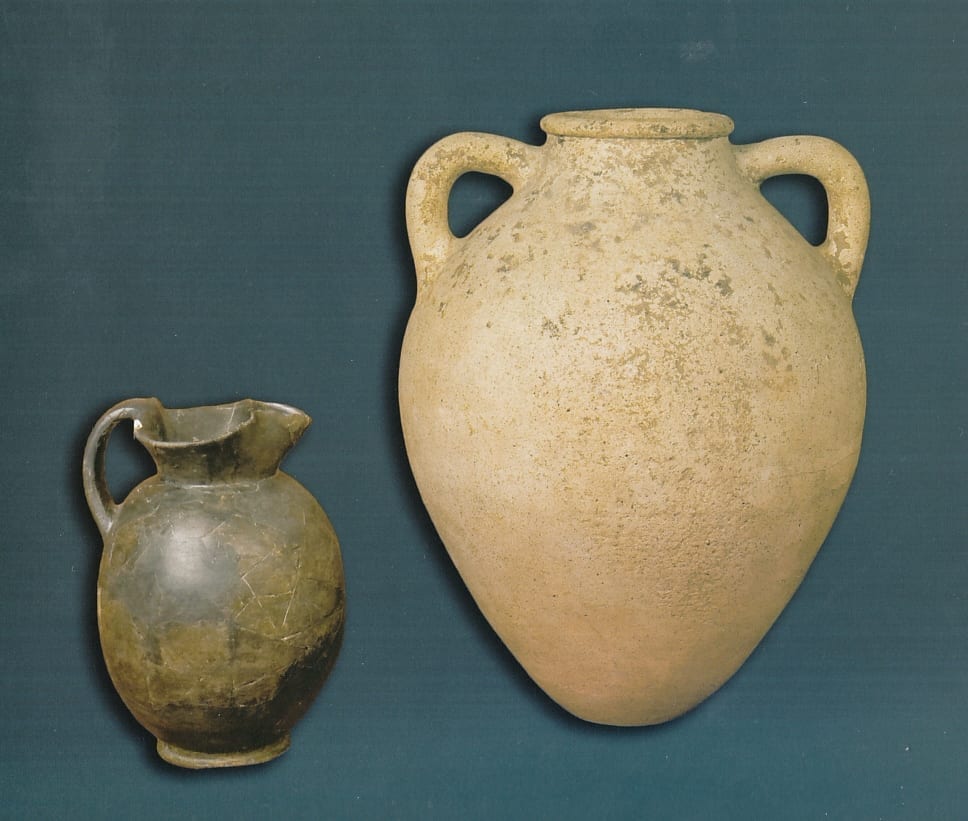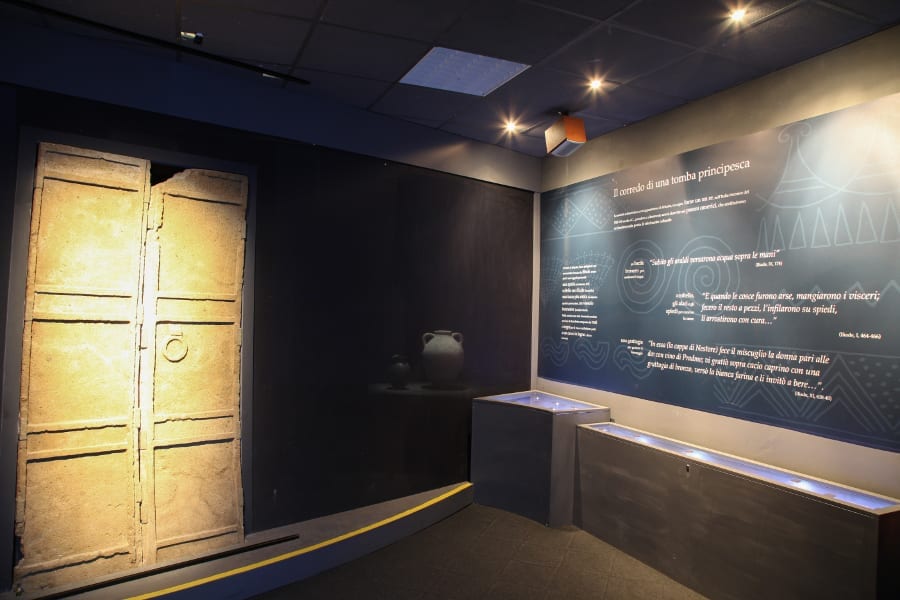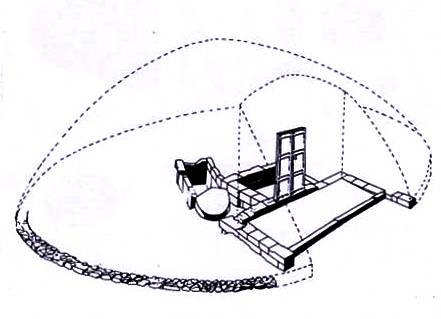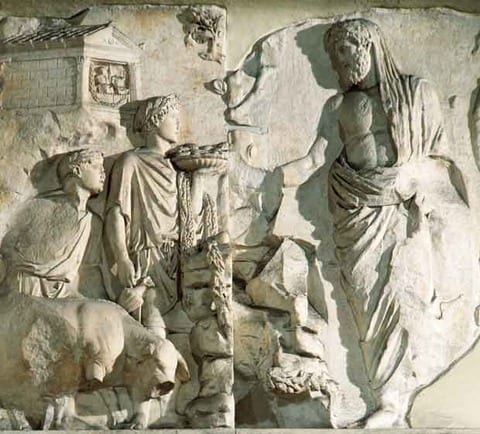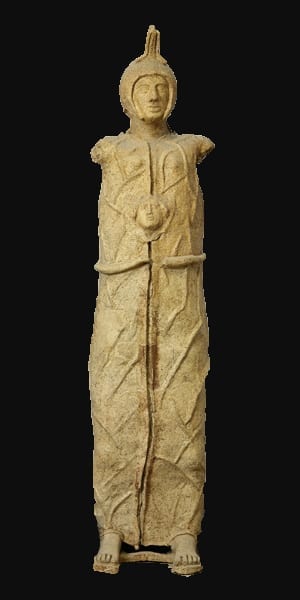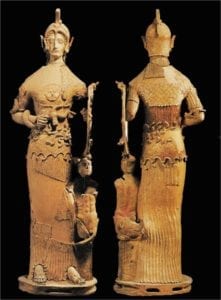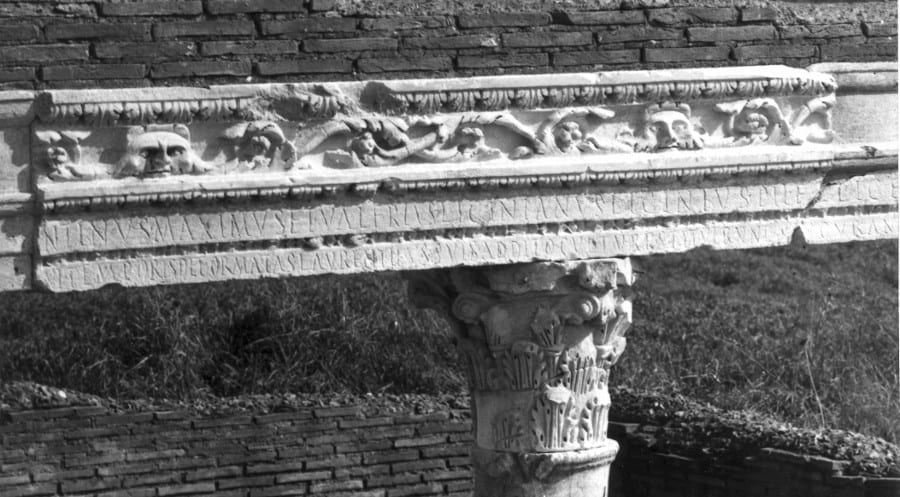Lavinium
LAVINIUM

The discovery
The location of Lavinium was identified in the 16th century by Pirro Ligorio, but, despite the repeated archaeological findings started since the 19th century, the systematic archaeological exploration of the settlement began in 1955 with the researches of Luca Cozza and Ferdinando Castagnoli; the systematic investigations of Castagnoli continued for several decades curated by La Sapienza University of Rome.The narration of the myth by Dionysius of Halicarnassus
In the Ancient Age different traditions of the legend of Aeneas coexisted for centuries handed down by Greek authors (like Ellanico of Mitilene, Sigeion of Damasta, Timaeus of Tauromenium) and Latin authors (Fabius Pictor, Cato, Varro) of which remains today just a few fragments. Only two narrations are complete: the complex narration of Dionysius of Halicarnassus and the narration of Virgil. The two versions usually do not exactly match each other, both because they derive from different sources and in the case of Virgil, the myth is often the result of poetical interpretation.The Virgilian version
Without taking into account the geographical coherence, Virgil locates the landing place of Aeneas at the mouth of river Tiber introducing a variation to the legend functional to the boundaries with Rome, represented by the mythic city of King Evandro situated over the Palatine, whose name derives from Pallantium a city of Arcadia Once they got off the ships, the Trojans tired and starving ate even the “mensae”, the flatbreads used as plates to contain the viands. Suddenly Aeneas understands that their journey is over because the prophecy of the Harpy Celenum about the “mensae” came true. Aeneas sends an embassy to king Latinus who welcomes the foreigners accepting their gifts and wedding the daughter Lavinia to Aeneas.The Places and the History
The most ancient permanent settlement of Lavinium dating back to the Bronze Age and the early Iron Age, is situated on the small hill that later will become the acropolis of the city and in the modern age the village of Borgo di Pratica di Mare. As early as the 8th century B.C. the settlement starts to occupy the plateau below and its is defended by strong walls made by big fragment of cappellaccio. In VI century B.C. the city assumes a more “urban” appearance: the houses, consisting of several rooms, are disposed according to a regular asset; the defensive circuit is strengthen and reinforced with square blocks; from the east door, equipped with a defensive bastion, starts a road leading to the coast. Alongside this road is located the sanctuary of the 13 Altars and on the final facing the sea, is located the sanctuary of Sol Indiges.. In that same period, in the east hilly slopes is built the sanctuary dedicated the goddess Minerva. The south sanctuary represents one of the most important expressions of the archaic Latin culture. Apparently lacking of a temple building, the sanctuary comprehends 13 altars of tuff, built in an outdoor areas and all oriented to east. The altars were erected in a progressive way since the VI century B.C. when they become a complete sequence that in the IV century B.C. comprehended 12 altars, some of them later restored or rebuilt. At the end of II century B.C. the sanctuary was abandoned definitively. It could be noted that the construction of the altars is not the result of a unique project but of a slow process characterised by supplements and substitutions. Next the altars has been discovered a building of considerable size belonging to the archaic age and composed of several rooms of uncertain function but surely connected with the activities of the sanctuary. Even if we already know series of altars in Greece and Magna Graecia, the sequence of the altars of Lavinium represents an exceptional example. It was thought that every single altar could be dedicated to a different divinity: in the area were found several bronze leaves with different inscriptions: one to the goddess Cerere, one to the Dioskouroi. These bronze leaves should be placed on the part dedicated to the donors near the altars. However is probable that the sanctuary was open to the numerous and different Latin cities for a common cult.Approfondimenti
Informazioni aggiuntiveLearn more:
F. Castagnoli, Lavinium I. Topografia generale, fonti, storia delle ricerche, Roma 1972
F. Castagnoli, Lavinium II. Le tredici are, Roma 1975
Enea nel Lazio, archeologia e mito, catalogo della mostra, Roma 1981
F. Zevi, “Note sulla leggenda di Enea in Italia”, in Gli Etruschi e Roma, Atti dell’incontro di studi in onore di Massimo Pallottino (Roma 1979), Roma 1981, Roma pp. 145-158
A.M. Jaia, “1995-2015. Sessant’anni della missione archeologica della “Sapienza” a Lavinium”, in Giornata di studio per il decimo anniversario dell’istituzione del Museo Archeologico “Lavinium”. Ferdinando Castagnoli: dalla ricerca archeologica nel Lazio arcaico alla valorizzazione del territorio, Roma 2017, pp. 17-25
La città è strettamente legata al racconto del mitico viaggio di Enea, cantato da Virgilio nell’Eneide, come punto di arrivo dell’eroe troiano sulle coste laziali.
Secondo la tradizione ripresa da Virgilio, infatti, appena sbarcato Enea fece il primo sacrificio, in un luogo presso il fiume Numico (oggi Fosso di Pratica: Numico_1), dove poi sarebbe sorto un santuario dedicato a Sol Indiges. Inseguendo una scrofa bianca gravida, l’eroe percorse una distanza di 24 stadi: qui la scrofa partorì trenta piccoli e il prodigio offrì ad Enea un segno della volontà degli dei di fermarsi e fondare una nuova città. L’eroe incontrò Latino, il re della locale popolazione degli Aborigeni, il quale, dopo aver consultato un oracolo, capì che i nuovi arrivati non dovevano essere considerati degli invasori, ma come uomini amici da accogliere. Enea sposò dunque la figlia di Latino, Lavinia, e fondò la città di Lavinium, celebrando la nascita di un nuovo popolo, nato dalla fusione tra Troiani e Aborigeni: il popolo dei Latini. Il mito racconta che Enea non morì, ma scomparve in modo prodigioso tra le acque del fiume Numico e da questo evento fu onorato come Padre Indiges: Il padre capostipite.
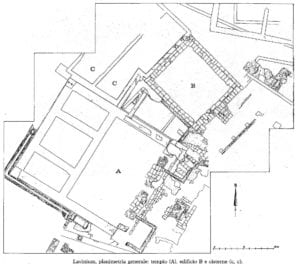 La piazza pubblica della città aveva una pianta rettangolare, ornata sui lati lunghi da portici, su cui si aprivano diversi edifici: uno di questi aveva forse la funzione di “Augusteo”, luogo dedicato al culto imperiale, come sembra indicare il ritrovamento di splendidi ritratti degli imperatori Augusto, Tiberio e Claudio. Sul lato corto occidentale si affacciavano un edificio elevato su un podio, forse la Curia (luogo di riunione del governo locale), e un tempio, risalente ad età repubblicana.
La piazza pubblica della città aveva una pianta rettangolare, ornata sui lati lunghi da portici, su cui si aprivano diversi edifici: uno di questi aveva forse la funzione di “Augusteo”, luogo dedicato al culto imperiale, come sembra indicare il ritrovamento di splendidi ritratti degli imperatori Augusto, Tiberio e Claudio. Sul lato corto occidentale si affacciavano un edificio elevato su un podio, forse la Curia (luogo di riunione del governo locale), e un tempio, risalente ad età repubblicana.
Il santuario, situato ad est della città antica, era dedicato alla dea Minerva, che a Lavinium è dea guerriera, ma anche protettrice dei matrimoni e delle nascite. È stato trovato un enorme scarico di materiale votivo databile tra la fine del VII e gli inizi del III sec. a.C., costituito soprattutto da numerose statue in terracotta raffiguranti soprattutto offerenti, sia maschili che femminili, alcune a grandezza naturale, che donano alla divinità melograni, conigli, colombe, uova e soprattutto giocattoli: le offerte simboleggiano l’abbandono della fanciullezza e il passaggio all’età adulta attraverso il matrimonio
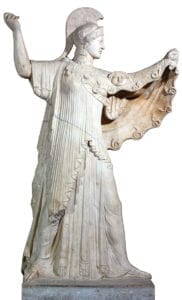 Eccezionale il ritrovamento di una statua della dea, armata di spada, elmo e scudo e affiancata da un Tritone, essere metà umano e metà pesce: questo elemento permettere di riconoscere nella raffigurazione la Minerva Tritonia venerata anche in Grecia, in Beozia, e ricordata da Viirgilio nell’Eneide (XI, 483): “armipotens, praeses belli, Tritonia virgo” (O dea della guerra, potente nelle armi, o vergine tritonia…)
Eccezionale il ritrovamento di una statua della dea, armata di spada, elmo e scudo e affiancata da un Tritone, essere metà umano e metà pesce: questo elemento permettere di riconoscere nella raffigurazione la Minerva Tritonia venerata anche in Grecia, in Beozia, e ricordata da Viirgilio nell’Eneide (XI, 483): “armipotens, praeses belli, Tritonia virgo” (O dea della guerra, potente nelle armi, o vergine tritonia…)
Il culto del santuario meridionale nasce in età arcaica ed era caratterizzato da libagioni. Nella fase finale il culto si trasforma invece verso la richiesta di salute e guarigione, documentato dalle numerose offerte di ex voto anatomici. Sono state trovate iscrizioni di dedica che ricordano
Castore e Polluce (i Dioscuri) e la dea Cerere. La molteplicità degli altari e delle dediche è stata interpretata come testimonianza del carattere federale del culto, quindi legato al popolo latino nel suo insieme: ogni altare potrebbe forse rappresentare una delle città latine aderenti alla Lega Latina, confederazione che riuniva molte città del Latium Vetus, alleatesi per contrastare il predominio di Roma.
Dionigi di Alicarnasso, vissuto sotto il principato di Augusto, afferma di aver visto in questo luogo, ancora al suo tempo, nel I sec. a.C., due altari, il tempio dove erano stati posti gli dèi Penati portati da Troia e la tomba di Enea circondata da alberi: «Si tratta di un piccolo tumulo, intorno al quale sono stati posti file regolari di alberi, che vale la pena di vedere» (Ant. Rom. I, 64, 5)
Alba
Lavinium fu considerata anche il luogo delle origini del popolo romano: all’immagine di Roma nel momento della sua espansione e della crescita del suo potere era utile costruire una discendenza mitica da Enea, figlio di Venere, onorato per le sue virtù, per la capacità di assecondare gli dèi; di conseguenza si affermò anche la tradizione per la quale Romolo, il fondatore di Roma, aveva le sue origini, dopo quattro secoli, dalla medesima stirpe di Enea.
Secondo questa tradizione Ascanio Iulo, il figlio di Enea, aveva fondato Alba Longa, città posta presso l’attuale Albano, dando l’avvio a una dinastia, che serviva per colmare i quattrocento anni che separano le vicende di Enea (XII sec. a.C.) dalla fondazione di Roma (VIII se. a.C.), quando, dalla stessa stirpe, nacquero i gemelli Romolo e Remo, secondo la tradizione allattati da una lupa. Questi erano dunque i nipoti del re di Alba Longa. La madre era Rea Silvia e il padre il dio Marte. Romolo uccise Remo e poi fondò Roma nel 753 a.C. Lavinium diventava così la città sacra dei Romani, dove avevano sede i “sacri princìpi del popolo romano”.
Il Borgo sorge su una altura occupata nell’antichità dall’acropoli di Lavinium. In età imperiale vi sorge una domus, testimoniata da pavimenti in mosaico in bianco e nero (Borgo_1). Una civitas Pratica è ricordata per la prima volta in un documento del 1061, mentre nell’epoca successiva si parla di un castrum che fu di proprietà del Monastero di San Paolo fino al 1442. La Tenuta di Pratica di Mare, comprendente anche il Borgo, allora definito “Castello” (Borgo_2), divenne poi proprietà della famiglia Massimi e in seguito fu acquistata nel 1617 dai Borghese. Il principe Giovan Battista, nel tentativo di valorizzare il territorio con l’agricoltura, ristrutturò il villaggio nella forma che ancora oggi rimane, caratteristica per la sua pianta ortogonale e la sua unitarietà. Dalla metà dell’Ottocento la malaria, che devastava la campagna romana, causò lo spopolamento del borgo, finché Camillo Borghese dal 1880 si impegnò nell’opera di ricolonizzazione, restaurando il palazzo e intervenendo con una importante opera di riassetto della tenuta, dove fu impiantata una singolare vigna a pianta esagonale. Il Borgo e la tenuta rappresentano una preziosa area monumentale e agricola ancora intatta all’interno della zona degradata di Pomezia e Torvaianica.
INTRODUCTION
According to the narration provided by ancient authors, the ancient settlement of Lavinium was founded by Aeneas, arrived to the shores of Latium after his escape from the city of Troy and a long journey through the Mediterranean Sea. The archaeological area with the sanctuary of 13 altars (VI-IV century B.C.), the huge tumulus which was probably the heroon of Aeneas –the symbolic burial site of the divinized Trojan hero- and the extraordinary remains today exposed in the Municipal Archaeological Museum, represent the most important elements of the myth linked to the foundation of the city by the Trojan hero. The myth itself contributed to make Lavinium the origin place of Roman people when the tradition of the direct lineage of Romulus, the founder of Rome, with Aeneas became widespread. In fact, Romulus descended from the kings of Alba Longa, the city founded by Ascanius, the son of Aeneas.
Contacts
Map
Modulo di contatto
Donec leo sapien, porta sed nibh rutrum, bibendum posuere libero.
